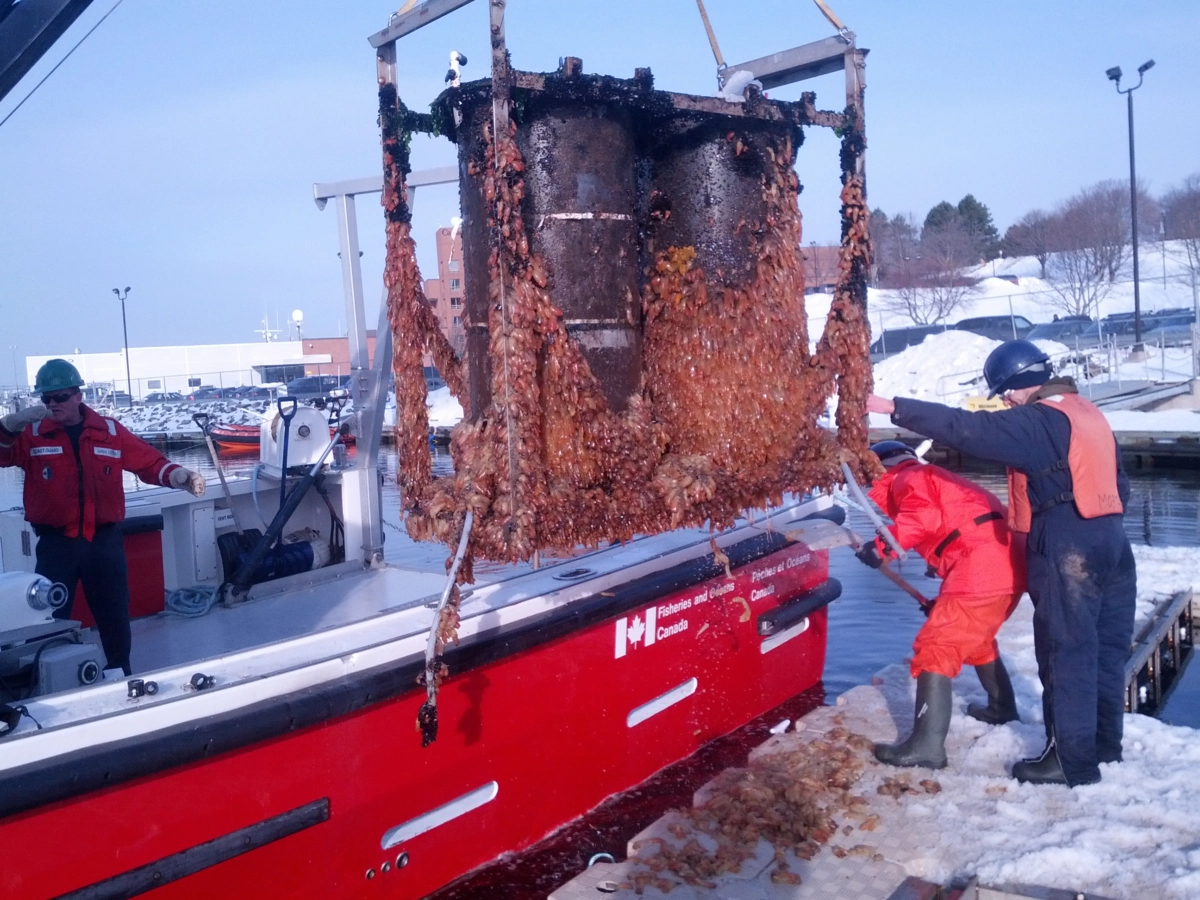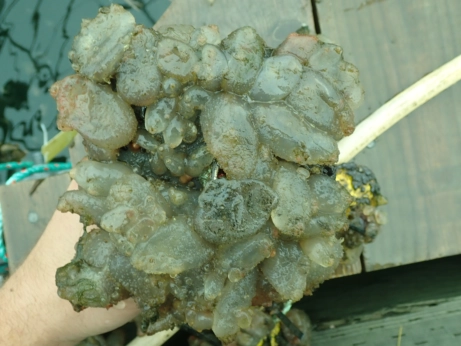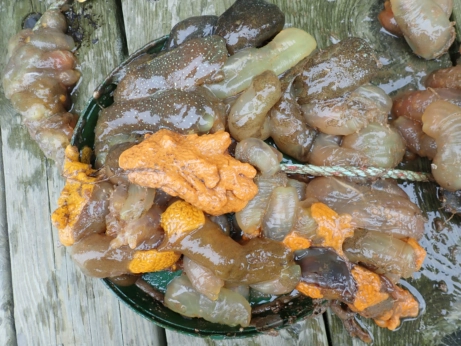Warmer ocean temperatures along the east coast of Canada and the United States are creating perfect conditions for the little-known sea squirt, a bio-fouling menace for shellfish farmers.

When poked, tunicates will squirt water. Hence, their nickname: sea squirts. But as cute as that sounds, these slimy, gelatinous sea creatures are anything but cuddly.
“They can be divided into two categories,” says Claudio DiBacco, a research scientist with Canada’s Fisheries and Oceans Canada. “Those that have been around since the latter part of the 19th century, they don’t harm the environment. It’s the newcomers that have arrived in the last few decades that are the troublemakers,” he says.
How sea squirts arrive and spread in a new area is no mystery. Often, they hitch rides in the ballast water used to weigh down ships without cargo. “The larvae are invisible and float with the ocean currents. They’re onboarded with a ship’s ballast water, and when it discharges in a new location, so does the tunicate,” says Boris Worm, a marine ecologist at Dalhousie University’s Ocean Frontier Institute. “It is almost impossible to keep them from spreading.”
Sea squirts are tiny (species range from 6-10 inches long) and have cute nicknames such as Compound Sea Squirt, Golden Star and Pancake Batter. But, despite their small stature and fun names, these invaders sucker themselves like barnacles to any hard surface, natural or manmade, singularly or in massive colonies. And they are heavier than they look. Made up of organs, sea squirts are 95 percent water; an oyster cage weighing five pounds can easily exceed 75 lbs. when attacked by colonized tunicates.

“We weren’t prepared for how heavy they were.” (Photo courtesy of courtesy of Fisheries and Oceans Canada)
Colton D’Eon is a self-described sea farmer and chief operating officer for D’Eon Oyster Company in Yarmouth, NS. He remembers the first time his oyster farm was hit with a tunicate infestation. “We weren’t prepared for how heavy they were, and lines snapped and we lost equipment. Now, we’re diligent. Our oysters are grown on the surface of the water in cages that can hold up to six bags of 300-1,200 oysters. We have learned to regularly take the bag and cage out of the water and let the sun and wind dry it out. This kills the tunicate but doesn’t solve the problem. They never go away,” he says.
It used to be that tunicates would die back in the cold winter water, and reemerge in the spring as the ocean warmed. “Now,” says DiBacco, “they’re finding thermal refuges, where the water stays warm enough for them to survive all year.”
Since the 1980s, there’s been an increase of more than two degrees Celsius (four degrees Fahrenheit) in the Gulf of Maine and surrounding waters. The average global ocean temperature has risen by only 0.7 degrees Celsius (1.5 degrees Fahrenheit) during that time. “The rate of warming is more than twice as fast as the global average,” says Worm.
Where the Bay of Fundy converges with the Gulf of Maine, for example, the water has warmed from a low of -3 degrees Celsius in 1960 to a low of just above freezing in 2020.
In 2006, NASA scientists said warming sea surface temperatures were also causing a global decline in phytoplankton productivity, a main food source for tunicates and shellfish.
“This competition for resources has caused the growth rate of mussels in some areas with heavy tunicate populations to be reduced by 30 percent,” says DiBacco. In 2015, bio-fouling tunicates so severely affected mussel supply in Nova Scotia that there was a three-month shortage for shellfish consumers.

Bio-fouling tunicates have severely affected mussel harvests. (Photo courtesy of courtesy of Fisheries and Oceans Canada)
Controlling bio-fouling organisms such as tunicates is expensive for fishermen, sometimes taking up to 10 percent of their profits in terms of manpower and equipment needed. These expenses can then be passed on to the consumer.
They are everywhere along the eastern coast of North America. The United States Department of Agriculture lists several species of sea squirts including clubbed and compound as invasive. In 2008, tunicates were found in Lake Tashmoo, a protected marine pond with shellfish aquaculture operations located on Martha’s Vineyard in Massachusetts.
The Woods Hole Oceanographic Institute in Massachusetts says oyster farmers along the US Eastern seaboard are continually finding cages and equipment covered with the brown-and-orange foam of the pancake batter tunicate. It takes months to clean it off and recoup the market loss of thousands of oysters suffocated by the invader. The institute is now studying the adaptive qualities of tunicates, wondering if there are any limits to their survival.
“I don’t think there’s a way for humans to stop them,” says D’Eon.
Aside from manually flipping and drying cages, pressure washing to rinse off the fouling tunicates has also been effective, along with adding a chemical lime solution to infested mussel stocks. And starting in 2024, the Canadian government will implement new ballast water regulations that require ships to scrub the water of organisms before dumping it. But, ultimately, it may be climate change that solves the problem.
In July 2023, Nova Scotia experienced a massive rain event. A total of 200 millimetres of rain fell within 12 hours, adding fresh water to Halifax harbor where the DFO had set up plates to track tunicate populations. “After the storm,” says DiBacco, “the invasive tunicates were gone and, as of mid-September 2023, hadn’t returned. It might be that the rainfall lowered the salinity in the water, changing oxygen and PH levels and affecting reproduction. We’re still collecting data.”
It’s a small flicker of hope for D’Eon, especially as more fresh water is coming. As polar ice caps melt, volumes will spill into the Atlantic. This, along with a warmer atmosphere and its ability to hold more moisture, increasing the frequency and velocity of rain events, could be the sea squirt’s kryptonite—an outcome for which fishermen and shellfish farmers have been hoping.
Are they edible?
Are these sea squirts edible?